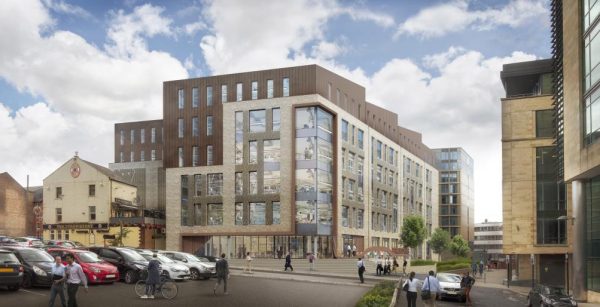Interview with Daniel Jaconetti, National Sustainable Design Leader at HED
Associate | Architecture | National Sustainable Design Leader at HED
Ahead of Daniel’s interview with Henry McDonald which will be broadcast on Episode 10 on 17th August, I caught up for a quick chat with Daniel Jaconetti.
What led you, Daniel Jaconetti, into sustainable architecture?
Growing up in the wooded Hudson Valley of New York State I’ve always felt a connection to the natural world. I became VP of the student environmental action club in high school and went on to study and then teach sustainable design in college. My passion lies in biomimetic concepts and how technologies inspired by nature can create responsive environmental that coexist with their ecologies. I researched this in both my undergraduate and graduate theses at Rensselaer Polytechnic.

Do you feel Europe and America are currently at a similar level when it comes to green building practices?
This could be a fairly subjective question although looking at vernacular evidence such as thatched roofs, and examples of modern energy-efficient techniques such as double skin facades might lead one to see Europe as ahead. This does make sense since energy prices have been much higher there for a long time.
Which country or territory is currently the world leader in green building and for what reasons?
This prompted me to do some research. Yale University has an environmental performance index that looks at things like ecosystem vitality, climate change leadership and air quality.
Listen to Daniel’s podcast interview below
They rank Denmark as number one with a score of 82.5 followed by Luxemburg, Switzerland, the UK and France. The US is ranked 24th with a score of 69.3. Their data shows that countries that dedicate capital to an eco-friendly culture tend to have higher scores.
The website Visual Capitalist went on to conclude that “when a sustainable ethos is applied to policy and business it typically bodes well for the economy and people alike.” I sincerely hope that our current Biden Administration and their Build Back Better Plan which HED signed a letter to support puts us on a more accelerated track in this country.
What could others learn from –
Saddleback College, Advanced Technology and Applied Sciences building, MIssion Viejo, CA

This project is a good example of how net-zero isn’t out of reach if you are thoughtful about the design from the outset. Perform site analysis and look to satisfy as much of the comfort needs as passive strategies. This project meets 80% of the energy loads allowing on-site PV to be much more budget feasible.
San Diego Energy Equity Campus / San Diego, CA

Here we have a client who wants to spread the word about the importance of leading in climate change mitigation and ensure that it is equitable. By creating a net-zero tech incubator with community outreach components they plan to do just that.
Lathrop / Chicago, IL

There were many partners in this affordable housing venture and its central idea was to preserve and restore an existing historic complex while making it modern, accessible, and efficient but keeping it within economic reach for lower-income families. In a bold move toward community equity, the client engaged the Army Corp of Engineers to create river access from the site. When Lathrop was originally built the river was polluted and industrial but today it is an amenity, and this project has created an opportunity for people to enjoy it.
Fifth Avenue / Chicago, IL

This project is a good advocacy story in how the QAP which awards public funding for affordable housing projects can be modernized to promote energy reducing designs. At the time this project was funded the QAP did not award extra points for programs such as Passivhaus or Living Building Challenge. So we applied for an LBC pilot program geared toward identifying barriers.
We discovered there was a financial barrier to renewable energy and more efficient mechanical systems…non-profit clients cannot access the same incentives as others. Also, there was a legislative barrier in the state of Illinois prohibiting water reuse which is required for a Full Living Building. Susan King our affordable Housing Studio Leader in Chicago and one of my sustainability mentors have worked with others to lobby the state to change the QAP and it now awards 10 points for projects pursuing Passivhaus or LBC which will make them more able to access funds. And other groups are also lobbying the state to change the rules around water reuse so that greywater, rainwater harvesting and maybe even blackwater treatment on-site might become permissible.
You may also be interested to read about top companies in Australia are working together to boost to heavy industry’s net-zero transition







